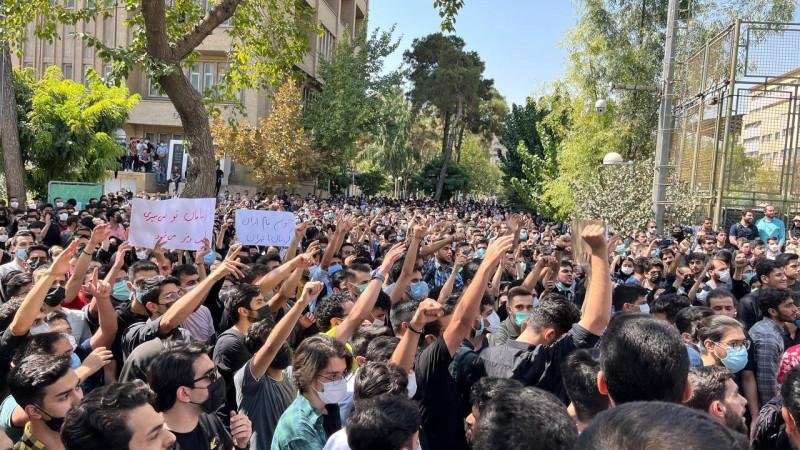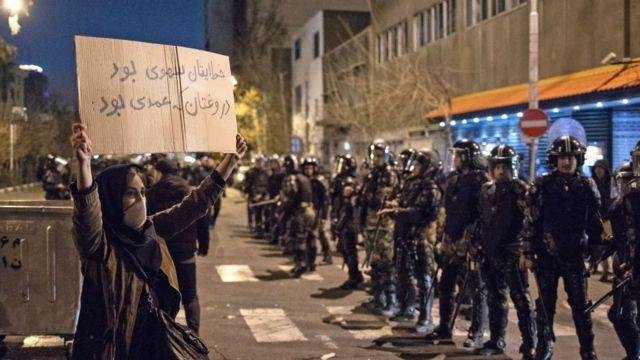Seven reasons for major anti-government protests in Iran Analysis by Mikhail Shereshevskiy
In Iran, a massive popular uprising against the current government has begun. Crowds attack police stations, seize government buildings, and women publicly burn hijabs in Tehran and other cities. These aren't just protests anymore. Demonstrators throwing stones at police, burning cars, and blocking highways can be seen in almost every region of the country.
How can we characterise the nature of the uprising?
First, these are the largest protests since the Green Movement of 2009-2010. Then Iranians protested against election fraud. But the current popular demonstration is much more radical in spirit and methods because the demonstrators do not try to avoid violence. In 2009, between one and four million people took to the streets in Tehran on some days, but on the whole, they were quite peaceful. Now, judging by the footage, tens of thousands are protesting in the Iranian capital, but they are much tougher. Meanwhile, according to political scientists, for the complete paralysis of the power systems, it is required to bring at least three to five per cent of the country's population to the streets, and more or less ready for a forceful rebuff.
Second, the uprising started spontaneously, there are no political groups or parties behind it. The movement has no organisation. It resembles the uprising in Romania in 1989, caused by the total poverty of the population and a protest against the violence of the regime. Then the spark that ignited the flame was the shooting of protesters by the military in the Romanian city of Timisoara, now the trigger was the alleged murder of a girl arrested by the vice police due to the lack of a hijab.

Third, the trend is extremely important. In recent days, the movement has been growing in breadth like a snowball, capturing more and more people, and at the same time radicalising by methods. If the regime decides to suppress the uprising, it will have to arrange a massacre in the next two or three days.
Fourth, the position of the army, soldiers and officers, as well as military units of the Islamic Revolutionary Guard Corps (IRGC) is very important. In Romania, during the 1989 uprising, equally spontaneous, the army sided with the demonstrators. Such a thing is hardly possible in modern Iran.
Fifth, the core of the forces that usually suppress protests in Iran is not the army, not the IRGC combat units and not the police, but the Basij - special detachments that obey the IRGC leadership. There are several tens of thousands of Basij. These are militants recruited mainly from the urban poor, poorly educated, prone to violence, ideologically processed and receiving material support from the regime: salaries and apartments. It was they who suppressed the movement.
Sixth, at the moment, the mechanism of decision-making by Iran's rulers is not completely clear. In theory, the Supreme Leader - Ayatollah Ali Khamenei, in whose hands the supreme power is concentrated, should give orders of this level. But as far as we know, he is not in that condition right now. And against the background of rumours about his illness, nothing can be ruled out. For example, it is unclear why the authorities have not turned off the Internet yet. In November 2019, the regime suppressed protests in more than 100 localities in one week, killing, according to various sources, from 400 to 1,500 people during this time. All this time, the Internet was turned off to prevent the coordination of public demonstrations. But now, judging by the flow of messages coming from various regions of Iran, the Internet is working.

Seventh, this is a multi-class and multi-ethnic uprising. Judging by the video footage, it covered a wide variety of social strata and ethnic groups. There are a lot of discontented people in Iran, and the reasons for discontent are very different. Workers are outraged by rising prices and meagre salaries (last year they went on strike en masse and chose workers' councils - class self-government bodies - to conduct strikes), students demand freedom of speech, and Azerbaijanis, Baluchis and Kurds complain of discrimination. Ethnic minorities make up about half of the country's population; many of their representatives are dissatisfied with schools' lack of independent municipal bodies and national languages. Women demand the right to dress as they see fit, free from the control of the morality police, and religious minorities are outraged by persecution. Therefore, and also because of the spontaneity of the protests, there is no general positive programme. The goals of the rebels are poorly understood and can vary greatly. Groups on Kish island demand "Freedom from Kish to Kurdistan", while demonstrators in Southern Azerbaijan [northwestern Iran] have declared the need for national independence. They are all united only by hatred of the Iranian regime, which plunged the country into the deepest economic crisis and is trying to solve all issues with the help of a police baton.








